Fish farming is a great way to produce seafood. The most important measure of success in fish farming is the feed conversion ratio (FCR). FCR is defined as the amount of feed given to a fish compared to how much weight it gains. The higher the FCR, the more efficient and profitable your farm will be in terms of yield.
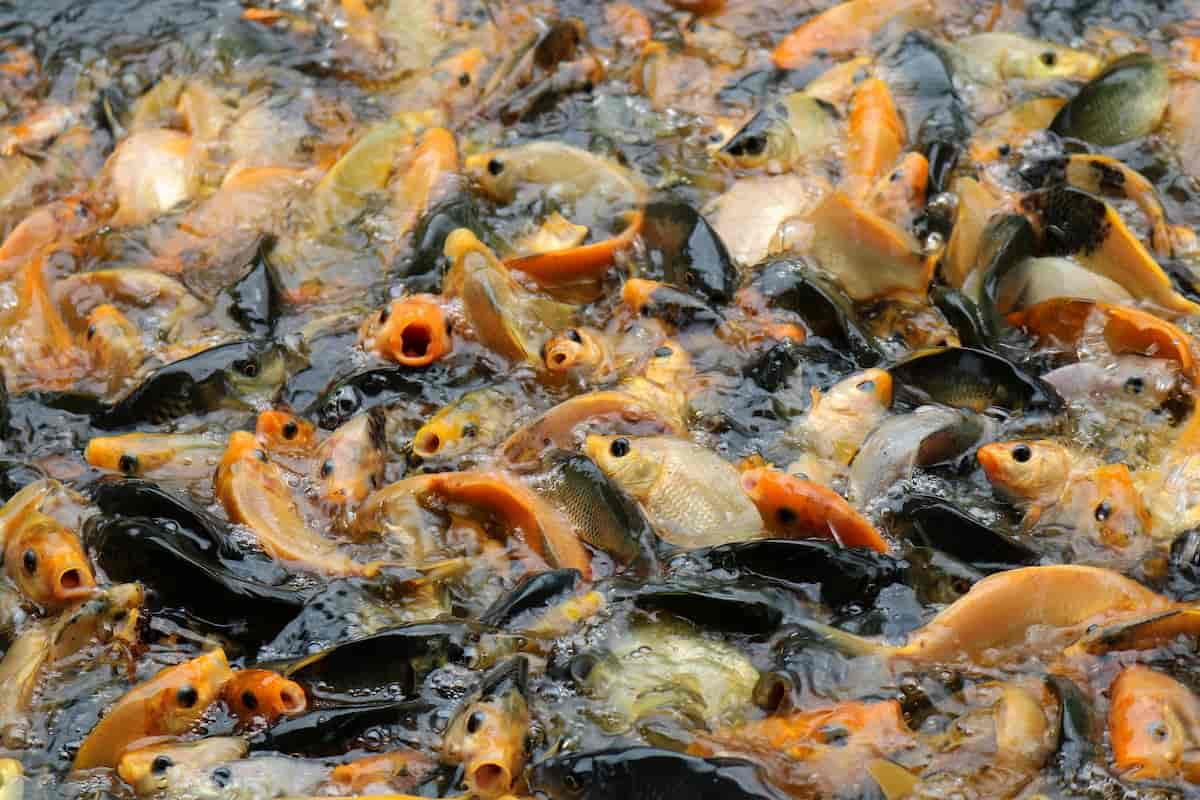
Taking the time to understand and implement key rules such as proper feeding schedules, optimal water temperature, adequate oxygen levels in the water, and disease prevention measures are important for increasing your fish farming operation’s Feed Conversion Ratio (FCR). By following these strategies consistently and measuring results accurately over time, you can make informed decisions that will help improve your FCR.
Key rules to improve Feed Conversion Ratio (FCR) in fish
What is Feed Conversion Ratio?
Feed conversion ratio (FCR) is a metric used to measure the efficiency of fish in converting feed into body mass. The lower the FCR, the more efficiently the fish converts feed into body mass. Therefore, improving FCR is essential for efficient and profitable fish production. Diet composition is particularly important in optimizing FCR.
The ideal diet for a given fish species should be nutritionally complete and provide all the essential nutrients in the correct proportions. It should also be palatable and easy to digest. In general, diets with a higher protein content tend to result in better FCR than those with lower protein levels. This is because protein is essential for the growth and maintenance of body tissue, and fish more efficiently utilize it than other nutrients such as carbohydrates or fats.
The Importance of FCR in Fish Farming
- FCR is a key metric in fish farming and can significantly impact profitability. FCR is a measure of the efficiency with which a fish converts feed into body mass and is calculated by dividing the weight of the fish at harvest by the total weight of feed consumed over the fish’s life.
- Several factors can influence FCR, including genetics, feeding regime, water quality, and temperature. In general, faster-growing fish strains will have lower FCRs than slower-growing strains. Improving FCR can be achieved by optimizing all aspects of the production system, from hatchery to harvest.
In case you missed it: Rupchanda Fish Farming in India: How to Start from Scratch, Set up, and Management
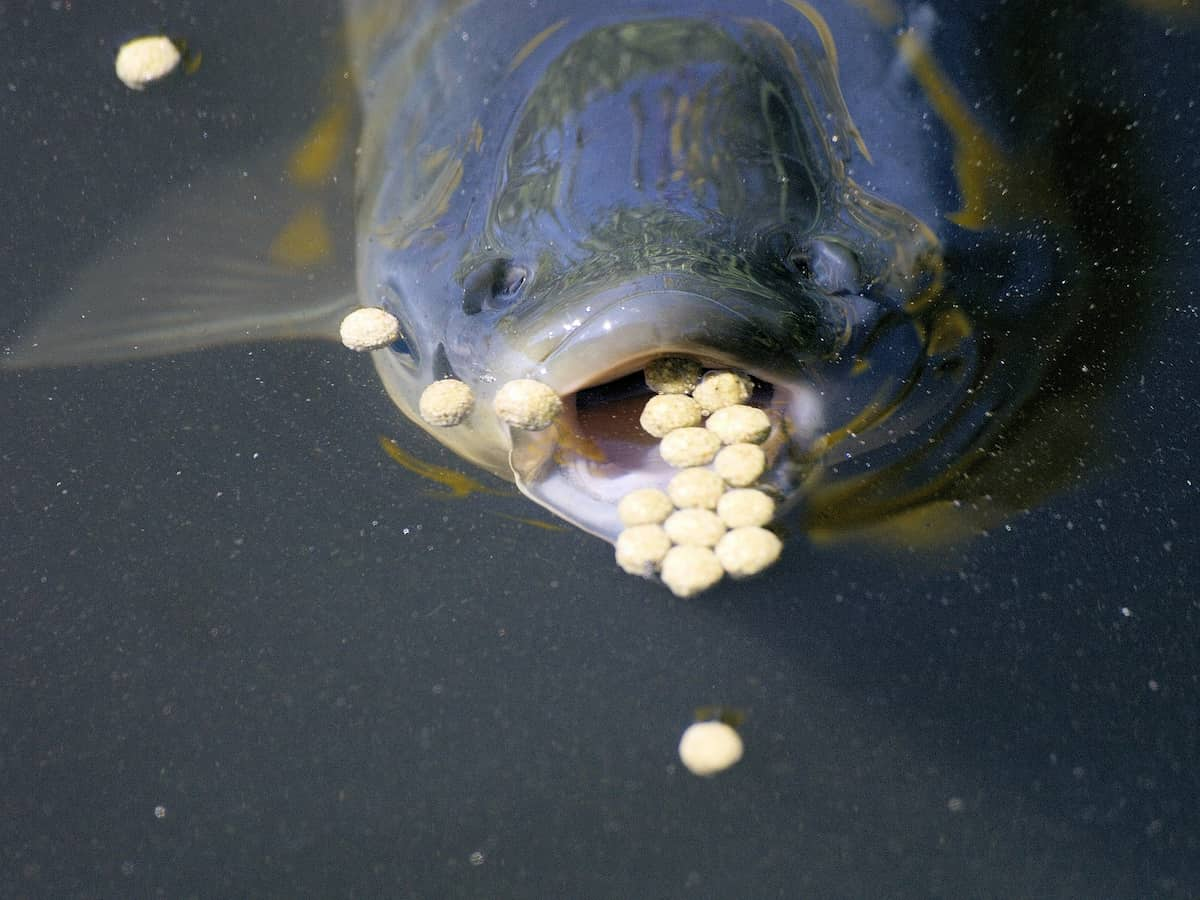
How to Monitor FCR in fish farming?
To monitor FCR, figure out what your baseline is. This will be your starting point to see how well your fish are doing and whether or not changes in diet or environment are needed. Next, track the weight of your fish regularly. Next, keep a log of when you feed them and how much they eat so you can identify patterns.
Lastly, take measurements of the fish to determine if they’re growing at the rate you want them to. Monitoring FCR is important because it’s a key indicator of how well your fish are doing. By tracking their weight, growth, and food intake, you can make changes to ensure your fish are healthy and thriving.
Simple management practices that can improve FCR in fish farming
- Providing high-quality feeds that are nutritionally balanced and appropriately sized for the fish being raised;
- Feeding regularly and consistently to minimize feed waste and maximize nutrient utilization;
- Maintaining good water quality throughout the production cycle; and
- Avoiding stressful conditions during transport and handling.
Implementing these practices can help to improve FCR and ultimately increase profitability in fish farming operations.
Key points to improve FCR
- Maintain a proper stocking density in your pond. Overcrowding can lead to decreased FCR as fish compete for food.
- Provide a high-quality diet for your fish. A nutritious diet will help them grow and convert food into body mass more efficiently.
- Keep your pond clean and free of debris. A clean pond environment will reduce your fish’s waste, leading to improved FCR.
- Manage water quality carefully. Good water quality is essential for the health of your fish and can also impact FCR positively or negatively.
- Be sure to aerate your pond properly. Oxygen is necessary for the metabolism of your fish and can affect FCR indirectly by impacting the health and growth of your fish population.
In case you missed it: How to Improve Feed Conversion Ratio (FCR) in Poultry Farming: Key Rules for Beginners
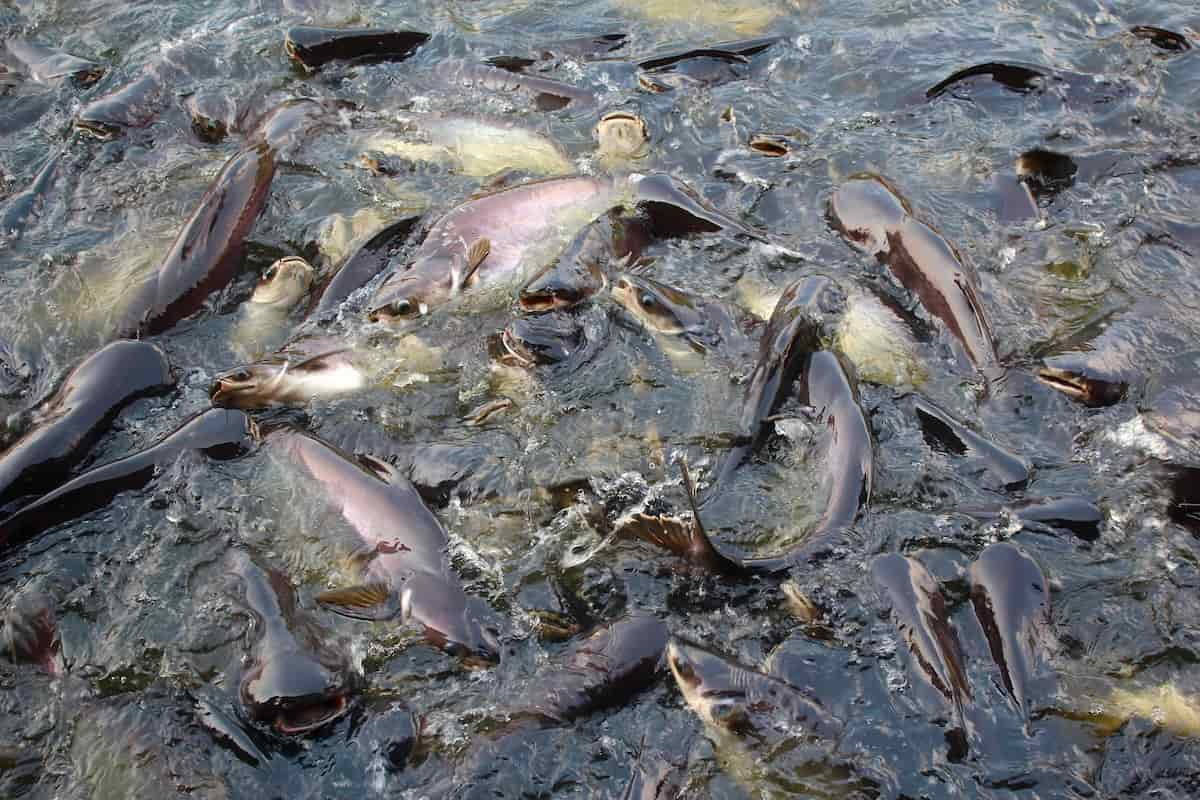
What are the factors influencing the FCR?
Several factors can affect FCR, including genetics, environmental conditions, and diet. However, one of the most important things farmers can do to improve FCR is to ensure that their fish have a high-quality diet that is nutritionally balanced and contains all the necessary nutrients for growth. A few key nutrients are essential for good growth and development in fish, including protein, amino acids, vitamins, and minerals. A diet deficient in these nutrients will result in poor growth and lower FCR.
Protein is essential for muscle growth and development; therefore, it should make up a significant proportion of the diet (around 20-30%). Amino acids are essential proteins and are important for good health and growth. In addition, vitamins and minerals are required for various bodily functions and processes, such as metabolism, immunity, and reproduction. A well-balanced diet containing all these essential nutrients will produce healthy fish with good FCR. Farmers should work with a nutritionist to formulate a diet that meets the nutritional needs of their fish.
Steps to Increase Feed Conversion Ratio (FCR) in Fish Farming
- Optimize Your Feed Formula – The first step is to optimize your feed formula. You want to ensure that your fish get all the essential nutrients. This means selecting the right ingredients and balancing them correctly.
- Use High-Quality Feed Ingredients – Using high-quality feed ingredients is also important. This means using fresh, quality ingredients that are free from contaminants. Using lower-quality ingredients can lead to poor digestibility and reduced growth rates.
- Implement a Good Feeding Schedule – Another key step is implementing a good feeding schedule. This means ensuring that your fish are fed regularly and that they’re not over or underfed. A good feeding schedule will help to optimize growth and reduce waste.
- Keep Your Fish Healthy – It’s also important to keep your fish healthy. This means providing them with clean water, good husbandry, and proper medical care when needed. In addition, keeping your fish healthy will help them to utilize their feed better and convert it into growth more efficiently.
In case you missed it: Key Rules to Improve Feed Conversion Ratio (FCR) in Shrimp Culture
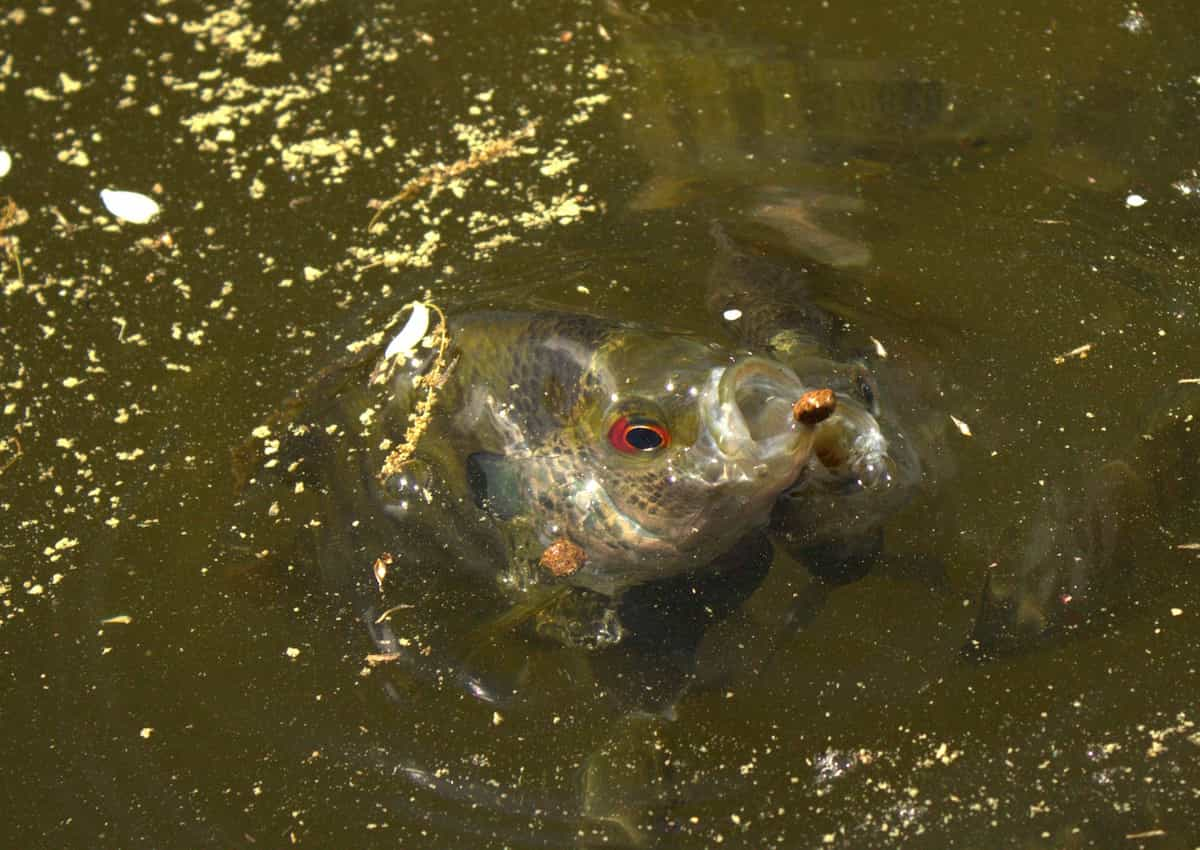
The benefits of improving your FCR
- There are many benefits to improving your FCR in fish farming. The most beneficial is that it can lead to higher yields. With a higher FCR, you can produce more fish in the same amount of time. This can lead to increased profits for your business.
- In addition to higher yields, improving your FCR can lead to healthier fish. With a better conversion rate, there will be less waste produced by your fish. This can mean that your fish are less likely to suffer from health problems. Additionally, healthier fish are often more flavorful and tend to fetch higher prices on the market.
- Finally, improving your FCR can help to reduce your environmental impact. With less waste produced, there will be less pollution in our waterways and oceans. This is good for the environment and the long-term sustainability of our seafood supply.
Feed conversion ratio formula for fish
To calculate the FCR of fish, the following formula is used:
FCR (g) = Feed Intake (g) / Weight Gain (g)
For example, if a fish consumes 10 grams of food and gains 1 gram of weight, its FCR would be 10. Therefore, this would be considered a very good FCR.
What is a good FCR (Feed Conversion Ratio) for fish?
You need to know a few key things to measure FCR accurately. Firstly, you want to know the weight of the fish at the start of the feeding period and the weight of the fish at the end of the feeding period. Secondly, you need to know how much food was given to the fish during that period. It’s important to remember that FCR varies depending on many factors, such as species of fish, age and size of fish, type of feed used, water temperature, and so on.
Therefore, it’s best to consult with a fisheries biologist or specialist before setting any hard-and-fast FCR targets for your operation. The ideal feed conversion ratio (FCR) for fish will vary depending on the specific species and individual fish. However, generally, a good FCR for fish is around 1.5-2.0.
This means that for every 1kg of food fed to the fish, they should gain around 1.5-2kg in body weight. Of course, achieving this perfect FCR is not always possible, and many factors can influence it. However, if you can keep your FCR at this level, then you are doing well, and your fish are likely to be healthy and growing well.
In case you missed it: Key Rules to Improve Feed Conversion Ratio (FCR) in Goats: For More Profits in Goat Farming
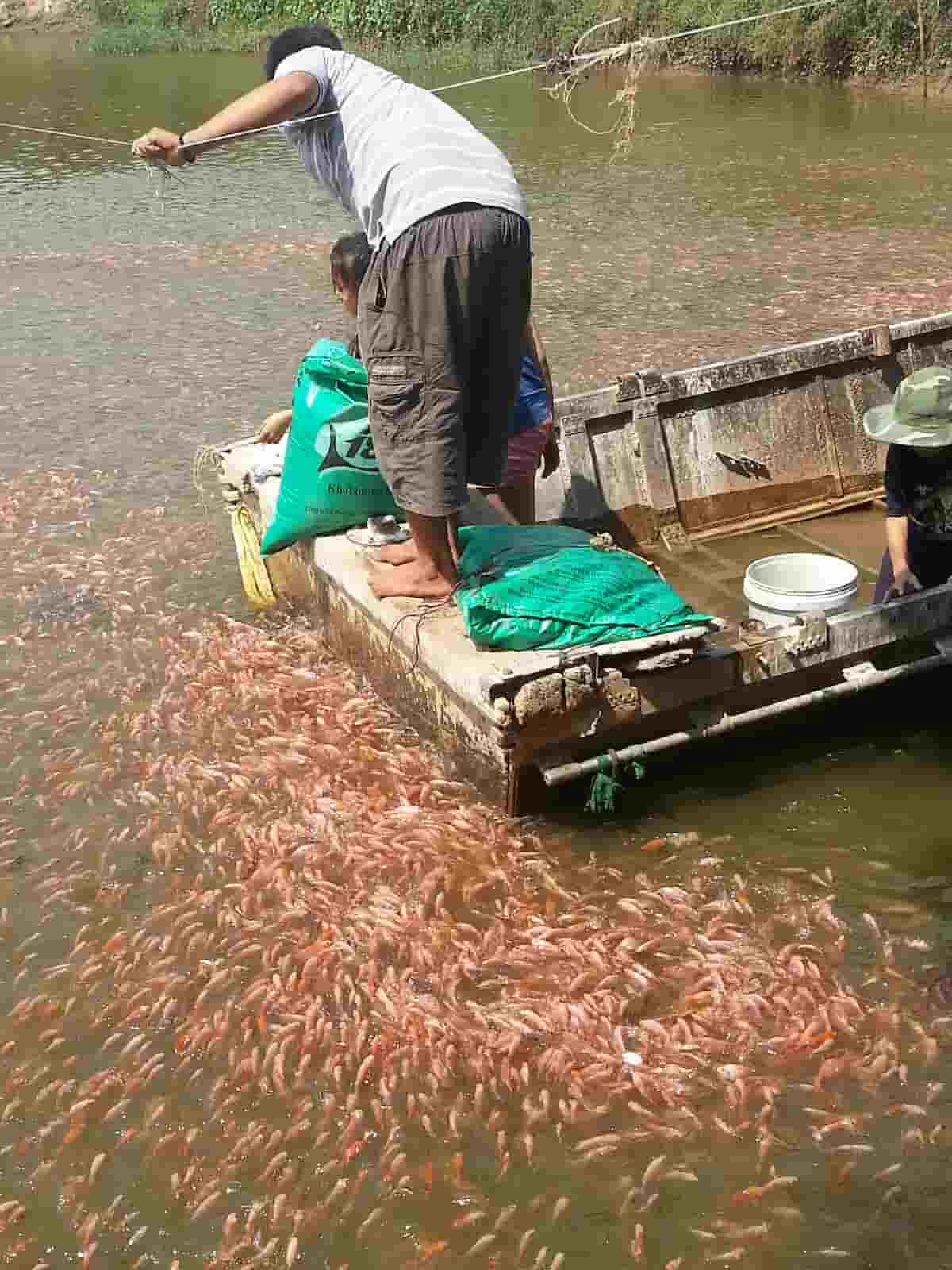
Tips for improving FCR in fish farming
- Use high-quality feed: This is one of the most important factors in achieving a good FCR. Make sure to use quality pellets that are nutritionally balanced and free from contaminants. This is especially important for growing fast-growing fish species, as they require more nutrients than slower-growing species.
- Avoid overfeeding: It’s important not to overfeed your fish, as this can lead to lower FCR. Rather, focus on providing just enough food to meet their daily needs.
- Maintain good water quality: Good water quality is essential for all aspects of fish health, including FCR. Be sure to test your water regularly and take steps to correct any imbalances. Poor water quality can affect fish health and growth, so make sure your tanks are clean and well-maintained.
- Provide adequate space: Giving your fish plenty of space to swim and grow will help them stay healthy and achieve a better FCR. Conversely, overcrowding can lead to stress and poor health, both of which can impact FCR negatively.
- Keep up with regular maintenance: Regular tank maintenance is crucial for keeping your fish healthy and ensuring a good FCR. This includes things like cleaning the tank, changing the water, and checking the filters
- Keep your fish healthy and disease-free: This will help reduce the food waste due to illness and ensure that fish grow at a healthy rate.
- Optimize feeding strategies: Proper feeding techniques can help reduce FCR by ensuring that fish are getting the right balance of nutrients and not overfeeding.
- Manage farm environment: Creating a favorable environment for your fish can help reduce stress levels and improve growth rates, which can lead to a lower FCR.
- Control water temperature and dissolved oxygen levels: Another important rule for good FCR is maintaining optimal water temperature and dissolved oxygen levels. Low temperatures slow fish growth, and high dissolved oxygen levels can be lethal.
- Manage feeding cycles: It’s important to manage feeding cycles carefully to improve FCR. For example, overfeeding can lead to reduced appetite and poor digestibility, while underfeeding results in stunted growth.
- Minimize handling and transportation stress: Reducing stress on fish through careful handling and transportation can also help improve FCR. Stressful conditions lead to poorer digestibility and reduced appetite, negatively impacting FCR.
- Keep tanks clean: Maintaining clean tanks is another vital step for good FCR. Poor water quality can lead to disease, which reduces growth and increases the amount of feed needed per unit of fish weight gain due to decreased appetite and digestibility.
In case you missed it: Key Rules to Improve Feed Conversion Ratio (FCR) in Dairy Animals: For More Profits in Dairy Farming Business
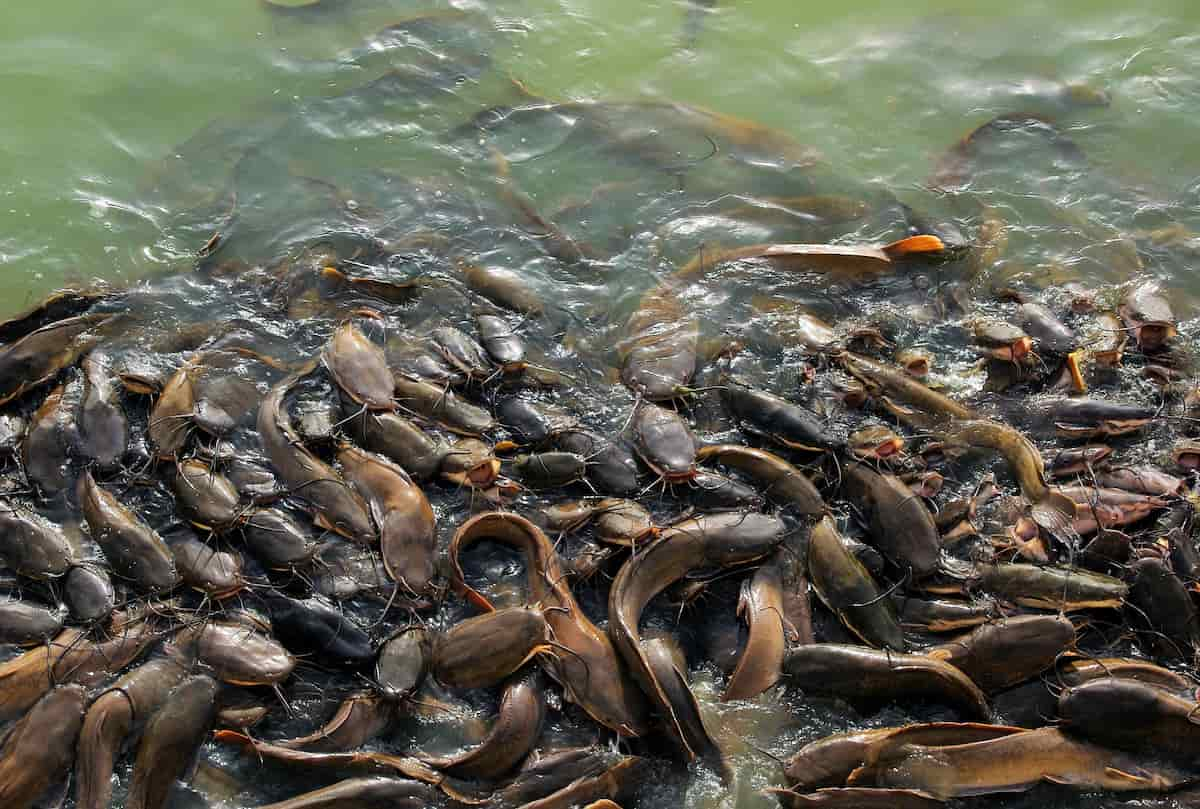
Conclusion
Fish farming is an important part of the agriculture industry, providing a valuable source of protein to many people around the world. The FCR is a key measure of efficiency in fish farming, as it reflects the amount of input (feed) needed to produce a given output (fish). Therefore, improving FCR can help farmers produce more fish with fewer resources, making their operations more sustainable and profitable long term.
- Types of Pesticides Used in Agriculture: A Beginner’s Guide
- Economical Aquaculture: A Guide to Low-Budget Fish Farming
- 15 Common Planting Errors That Can Doom Your Fruit Trees
- How to Make Houseplants Bushy: Effective Tips and Ideas
- Innovative Strategies for Boosting Coconut Pollination and Yield
- Pollination Strategies for Maximum Pumpkin Yield
- The Complete Guide to Chicken Fattening: Strategies for Maximum Growth
- Natural Solutions for Tulip Problems: 100% Effective Remedies for Leaf and Bulb-Related Issues
- Revolutionizing Citrus Preservation: Towards a Healthier, Greener Future
- Natural Solutions for Peony Leaf and Flower Problems: 100% Effective Remedies
- Maximizing Profits with Avocado Contract Farming in India: A Comprehensive Guide
- Natural Solutions for Hydrangea Problems: 100% Effective Remedies for Leaf and Flowers
- The Ultimate Guide to Choosing the Perfect Foliage Friend: Bringing Life Indoors
- From Sunlight to Sustainability: 15 Ways to Use Solar Technology in Agriculture
- The Ultimate Guide to Dong Tao Chicken: Exploring from History to Raising
- The Eco-Friendly Makeover: How to Convert Your Unused Swimming Pool into a Fish Pond
- Mastering the Art of Delaware Chicken Farming: Essentials for Healthy Backyard Flocks
- 20 Best Homemade Fertilizers for Money Plant: DIY Recipes and Application Methods
- How to Craft a Comprehensive Free-Range Chicken Farming Business Plan
- Brighten Your Flock: Raising Easter Egger Chickens for Beauty and Bounty
- How to Optimize Your Poultry Egg Farm Business Plan with These Strategies
- Subsidy for Spirulina Cultivation: How Indian Government Schemes Encouraging Spirulina Farmers
- Ultimate Guide to Raising Dominique Chickens: Breeding, Feeding, Egg-Production, and Care
- Mastering the Art of Raising Jersey Giant Chickens: Care, Feeding, and More
- Ultimate Guide to Raising Legbar Chickens: Breeding, Farming Practices, Diet, Egg-Production
- How to Raise Welsummer Chickens: A Comprehensive Guide for Beginners
- How to Protect Indoor Plants in Winter: A Comprehensive Guide
- Ultimate Guide to Grow Bag Gardening: Tips, Tricks, and Planting Ideas for Urban Gardeners
- Guide to Lotus Cultivation: How to Propagate, Plant, Grow, Care, Cost, and Profit
- Agriculture Drone Subsidy Scheme: Government Kisan Subsidy, License, and How to Apply Online
- Ultimate Guide to Raising Araucana Chickens: Breed Profile, Farming Economics, Diet, and Care
- Bringing Hydroponics to Classroom: Importance, Benefits of Learning for School Students
- Ultimate Guide to Raising Polish Chickens: Breed Profile, Farming Economics, Diet, and Care
- Ultimate Guide to Raising Australorp Chickens: Profile, Farming Economics, Egg Production, Diet, and Care
- Silkie Chicken Farming: Raising Practices, Varieties, Egg Production, Diet, and Care
- Sussex Chicken Farming: Raising Practices, Varieties, Egg Production, Diet and Care